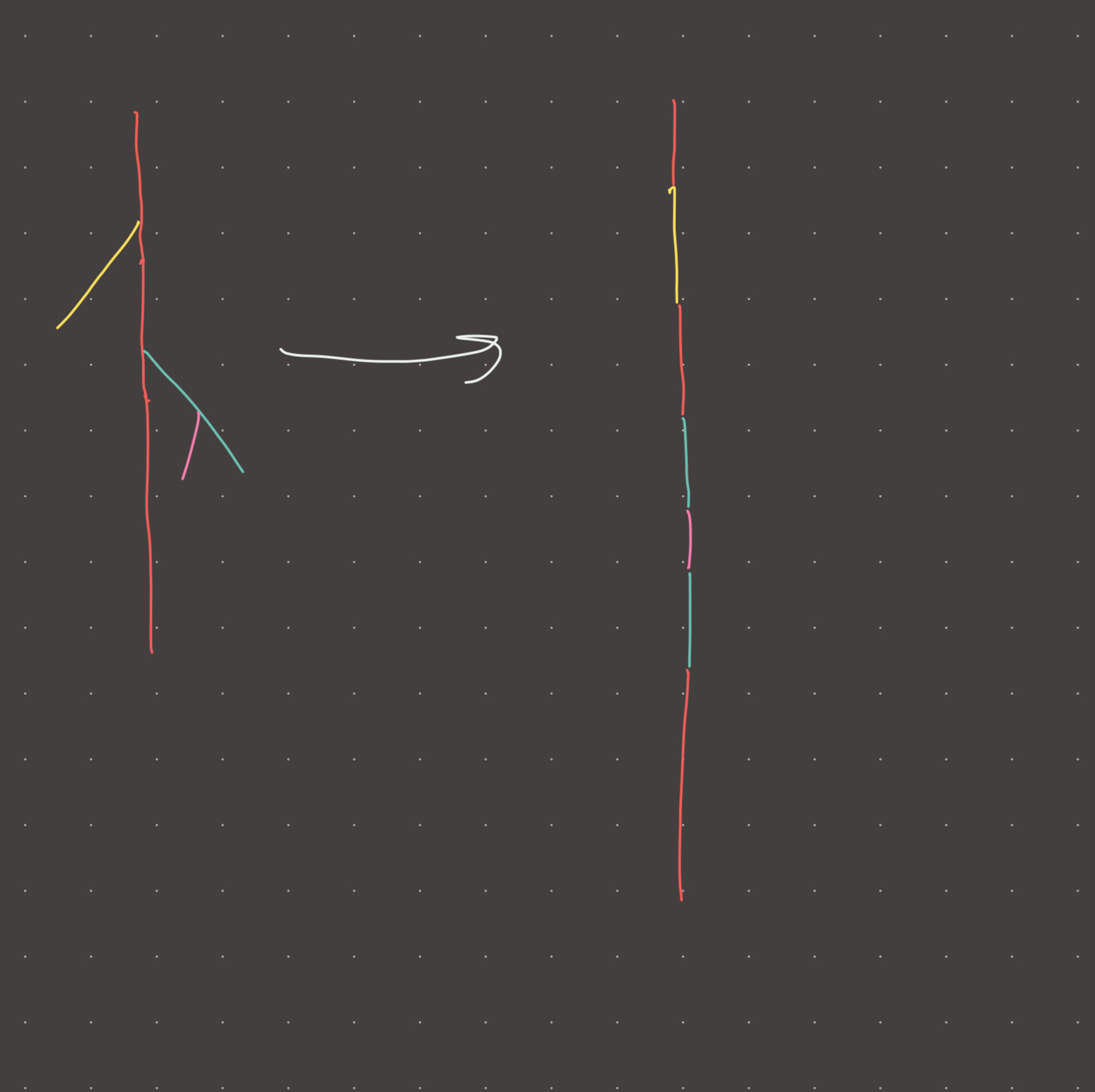Link: https://leetcode.com/problems/flatten-a-multilevel-doubly-linked-list/
Solution:
Topics: recursion, linked list
Intuition
It should be instantly clear that the solution is recursive because of the multi-level data structure. For example, a child node can have nodes that it is connected to that themselves have children…so its clear that however we flatten the list, we should do it recursively.
The main idea is to recursively traverse the list and when we encounter a child, return the last node in its own contextual list. When we have the last node, we can stitch the list back together, and set the child attribute to None. This sounds simple but the implementation is littered with edge cases.
The best approach is to prohibit reaching None in the recursive call stack, by returning curr_node when curr_node.next is None. Why? Because if we want to flatten the list, like mentioned before we need the last contextual node for each child. Returning curr_node when there is no next attribute is doing exactly that…this is the end node. If, however, we allow returning None, the code gets bloated fast because then we need to keep track of the parent and so on.
Of course this approach introduces the edge case if head is None to start with, but handling this up front is a small price to pay.
Implementation
def flatten_list(head)
if head is None:
return head
def flatten(node):
if node.child:
temp = node.next
node.next = node.child
node.child.prev = node
last = flatten(node.child)
node.child = node
if temp:
last.next = temp
temp.prev = last
return flatten(temp)
if node.next is None:
return node
return flatten(node.next)
flatten(head)
return head
#time: o(n)
#memory: o(n) #stack spaceMnemonic
Imagine a string with many splits. Our job is to cut off at the split and tie the string back together such that there are no splits (single unified string).
Visual

Review 1
The above implementation is a bit too clever…its no wonder I was struggling with edge cases. There is no need to complicate things. We have a very simple task: flatten the list. All we need to do is get the last node in the child list and stitch the list back together…so we do exactly that. We can use a helper function get_tail(node) to get the last node and stitch the list. But wouldn’t that list not be flat if we are only getting the tail? Potentially yes…does that matter? NO! Because we simply move the pointer to node.next and we are guaranteed to capture all nested lists regardless of their depth! In fact, even recursion is not needed here!
Implementation (simple, iterative)
def flatten(head):
def get_tail(node):
while node.next:
node = node.next
return node
node = head
while node:
if node.child:
old_nxt = node.next
node.next = node.child
node.child = None
node.next.prev = node
if old_nxt:
tail = get_tail(node.next)
tail.next = old_nxt
old_nxt.prev = tail
node = node.next
return head